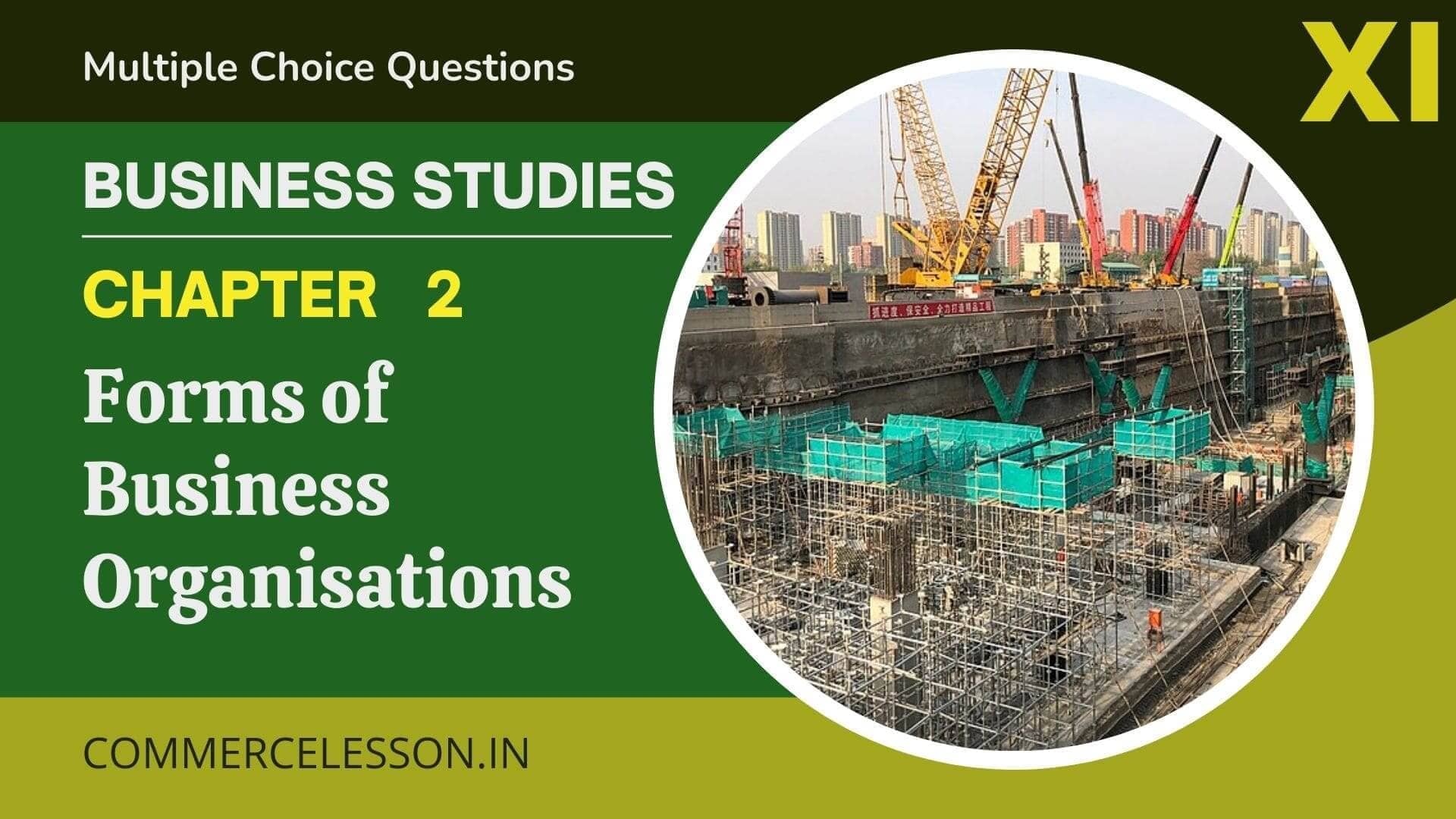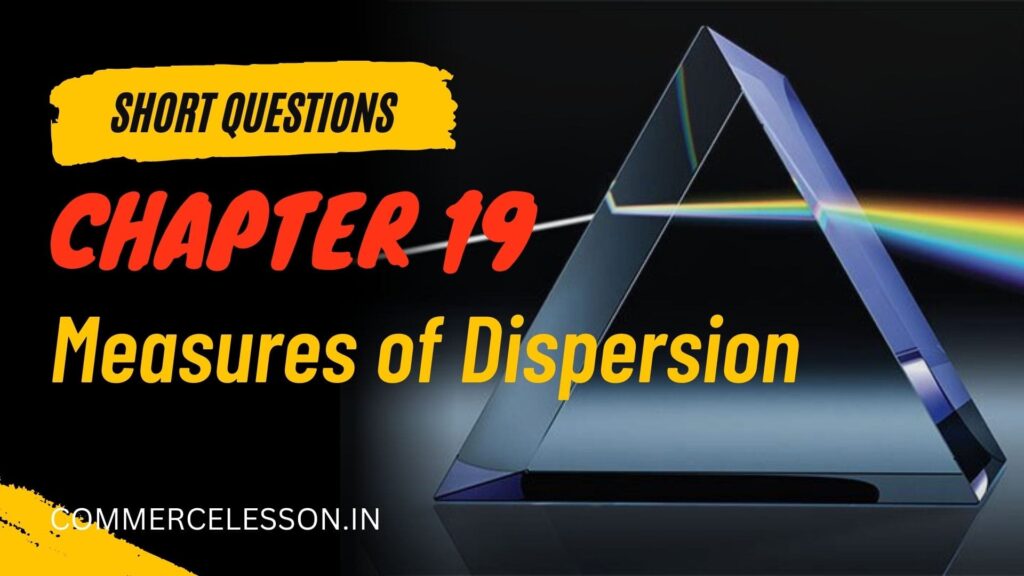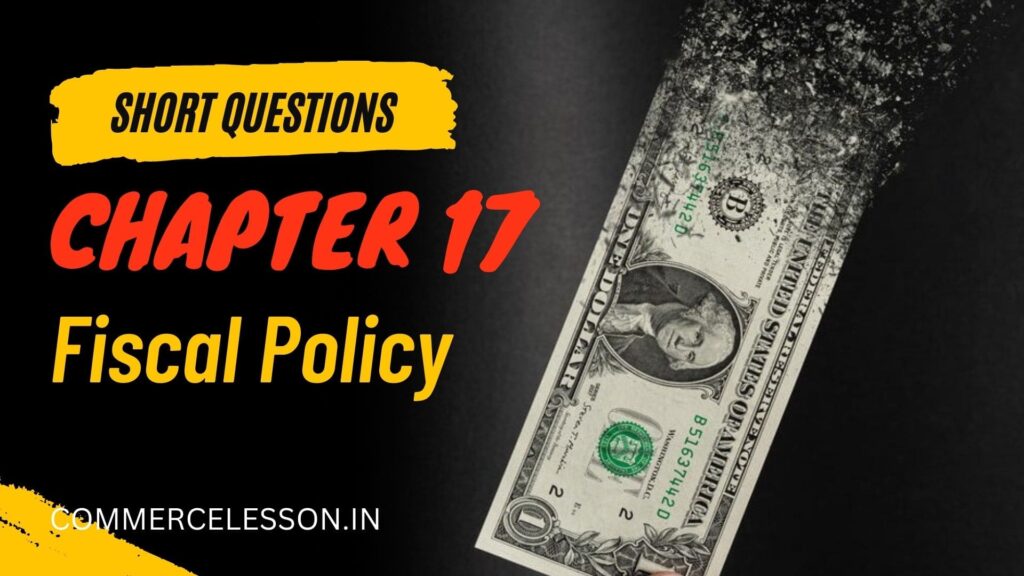Mutiple Choice Questions (MCQ) [1 Mark each]
1. A business that is established in one’s ownership is called –
(a) Sole proprietorship business
(b) Partnership business
(c) Cooperative society
(d) Joint stock company
2. The number of members of the partnership business should be at least –
(a) 2
(b) 3
(c) 5
(d) 8
3. Auditing of accounts of Joint stock companies is currently mandatory under the Companies Act of –
(a) 1956
(b) 1958
(c) 1959
(d) 2013
4. The main objective of forming a cooperative society is –
(a) Earning profit
(b) Rendering service
(c) Public welfare
(d) None of these
5. All decisions are taken in Sole Proprietorship business by –
(a) Creditor
(b) Owner
(c) Employee
(d) Debtor
6. The number of members of the co-operative society shall be at least –
(a) 10
(b) 12
(c) 14
(d) 15
7. _ have the right to control the partnership business.
(a) Owner
(b) Partners
(c) Employees
(d) Creditors
8. Shareholders can know the scope of their investment through the _ while investing in the company.
(a) Balance Sheet
(b) Memorandum of Association
(c) Articles of Association
(d) None of these
9. Interest rate payable on lending in partnership business is –
(a) 5 percent
(b) 6 percent
(c) 7 percent
(d) 8 percent
10. Membership of Cooperative Societies is open to –
(a) One person
(b) the public
(c) someone special
(d) creditors
11. No partner’s _ is transferable without the consent of all the partners.
(a) Share
(b) Profit
(c) Loss
(d) Capital
12. The owner himself manages the business in –
(a) Sole proprietorship business
(b) Cooperative society
(c) Partnership business
(d) Joint stock company
13. The business that can be terminated at any time due to inefficiency of the owner –
(a) Partnership business
(b) Cooperative society
(c) Sole proprietorship business
(d) Joint stock company
14. All risks and liabilities of the business are borne by the business partner in –
(a) Sole proprietorship business
(b) Cooperative society
(c) Partnership business
(d) Joint stock company
15. Convening of statutory meetings is mandatory in case of –
(a) Private Companies
(b) Public Companies
(c) Partnership business
(d) Sole proprietorship business
16. Transfer of shares can be done in case of –
(a) Public companies
(b) Private companies
(c) Partnership business
(d) None of these
17. _ are registered under the Companies Act.
(a) Partnership businesses
(b) Cooperative societies
(c) Joint ventures
(d) None of these
18. ‘Dishari Publication Private Limited’ – this company is a –
(a) Public company
(b) Private company
(c) Partnership business
(d) None of these
19. In order to increase the number of directors in a public company, the permission of _ is mandatory.
(a) State Government
(b) Central Government
(c) Board of Directors
(d) None of these
20. Articles of Association are not mandatory for –
(a) Public Company
(b) Private Company
(c) Partnership business
(d) None of these
21. What type of business is owned by a single person?
(a) Sole proprietorship business
(b) Partnership business
(c) Cooperative society
(d) Joint stock company
22. In which business capital is jointly provided by partners?
(a) Joint Stock Company
(b) Cooperative Society
(c) Partnership business
(d) None of these
23. ‘solidarity’ – this attitude belongs to which type of business?
(a) Cooperative business
(b) Partnership business
(c) Joint stock company
(d) None of these
24. Who is the entrepreneur of a sole proprietorship business?
(a) Creditor
(b) Debtor
(c) The owner himself
(d) A special person
25. How many members of a partnership business can own the business?
(a) 2 members
(b) 5 members
(c) 10 members
(d) All members
26. Maximum number of members of a Cooperative Society is –
(a) 10
(b) 20
(c) 100
(d) No fixed limit
27. How many years can a director hold that position in a Cooperative Society?
(a) 2 years
(b) 3 years
(c) 4 years
(d) 5 years
28. Statutory meeting for shareholders in Joint stock company can be convened within how many days before commencement of business?
(a) After one month but within six months
(b) After two months but within seven months
(c) After three months but within eight months
(d) None of these
29. Which of the following is the first step in company formation?
(a) Initial plan
(b) Initial survey
(c) Registration Certificate
(d) Prospectus
30. What is the main function of establishing a business?
(a) Introduction of business
(b) Business activities
(c) Personal aspects of business
(d) None of these
31. What is the important step in setting up a business organisation?
(a) Fixed decision
(b) Determination of volume
(c) Determination of Ownership
(d) Selection of location
32. The word ‘Organisation’ is derived from –
(a) Organism
(b) Organic
(c) Organise
(d) None of these
33. What is the work of establishing a business called?
(a) Business promoter
(b) Setting up of Business
(c) Business controller
(d) None of these
34. What is the person called who sets up a business with the initiative role?
(a) Business promoter
(b) Setting up of business
(c) Business controller
(d) None of these
35. Which is the first step in setting up a business organisation?
(a) Fixed decision
(b) Feasibility studies
(c) Formulation of project
(d) Develop business opportunities
36. What is the second step in setting up a business organisation?
(a) Feasibility studies
(b) Determination of ownership
(c) Selection of Location
(d) Merger
37. In which business does the owner invest money from his own sources?
(a) Sole Proprietorship business
(b) Partnership business
(c) Cooperative business
(d) Government business
38. In which business do members invest or borrow money from personal sources?
(a) Partnership business
(b) Cooperative business
(c) Government business
(d) None of these
39. From which stage of setting up of business organisation can a clear picture of the organisation be obtained?
(a) Market research
(b) Organisational structure
(c) Legal formalities
(d) None of these
40. Which element of the business organisation exists between the owner and the organisation ?
(a) Separate entity
(b) Separate presentation
(c) Separate reflections
(d) None of these
41. The first Companies Act of independent India was enacted in the year –
(a) 1956
(b) 1957
(c) 1958
(d) 1959
42. Minimum number of members in case of Private company is –
(a) 3
(b) 2
(c) 5
(d) 7
43. Indian Partnership Act is passed in the year –
(a) 1932
(b) 1956
(c) 1872
(d) 1912
44. Profits are not distributed in –
(a) Cooperative society
(b) Partnership business
(c) Sole proprietorship business
(d) Company
45. Qualification shares of company are purchased by. –
(a) Directors
(b) Auditor
(c) Employees
(d) Banker of the company
46. The number of directors of a private limited company is at least –
(a) 7
(b) 3
(c) 2
(d) None of these
47. As per the Partnership Act, 1932, the minimum number of partners in a partnership business is –
(a) 5
(b) 2
(c) 6
(d) 7
48. Companies Act in India was recently amended in which year?
(a) 2004
(b) 2010
(c) 2011
(d) 2013
49. What is the minimum number of members for public company meetings?
(a) 5
(b) 10
(c) 15
(d) 20
50. What is the minimum number of members for private company meetings?
(a) 2
(b) 4
(c) 6
(d) 8
51. What word is used at the end of public company names?
(a) Limited
(b) Unlimited
(c) Public Limited
(d) Private Limited
52. If not mentioned in the partnership deed, how are the profits of the partnership business distributed?
(a) As per the demands of the partners
(b) In Capital ratio
(c) Equally
(d) None of these
53. Registration of partnership business in India is –
(a) Compulsory
(b) Optional
(c) Neither compulsory nor optional
(d) None of these
54. Limited Liability Partnership Act was introduced in India in –
(a) 2006
(b) 2007
(c) 2008
(d) 2009
55. Maximum number of members in Public Limited Company is –
(a) 7
(b) 10
(c) 100
(d) No fixed limit
56. Maximum number of members in Private Limited Company does not include –
(a) Employees
(b) General Shareholder
(c) Employee Shareholder
(d) Shareholder Director
57. The Limited Liability Partnership Act was passed in –
(a) 1872
(b) 1932
(c) 2008
(d) 2013
58. Which one is not the objective of Cooperative society?
(a) Voluntary membership
(b) Democratic control
(c) Concern for the community
(d) Individual profit motive
59. A Public Limited Company can start its business after
(a) Certificate of Incorporation
(b) Collection of Capital
(c) Certificate of Commencement of business
(d) Issue of shares
60. Prospectus is issued by
(a) Sole proprietorship
(b) Partnership firm
(c) Cooperative Society
(d) Company
Liked our post?
We are available with lots and lots of commerce-related content.





[…] Chapter 2 : Forms of Business Organisation | Multiple Choice Questions (MCQ) | BSTD | Class 11 […]